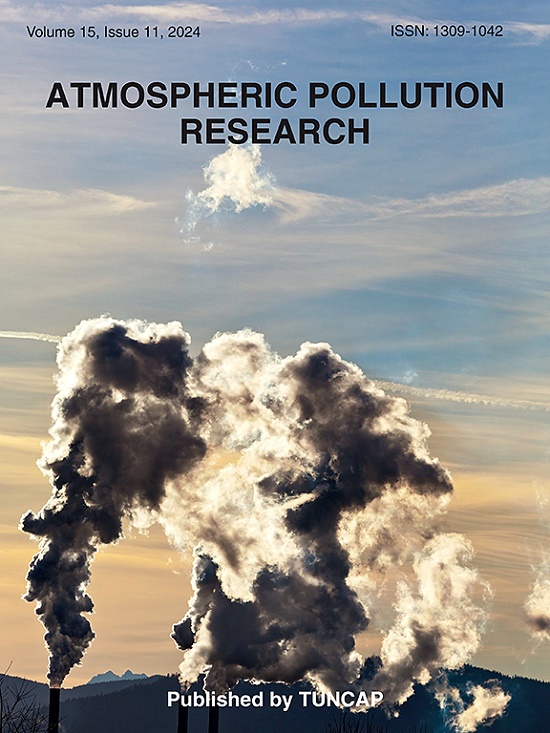Source apportionment of primary and secondary fine particulate matter in Eskisehir/Türkiye using conventional and dispersion-normalized positive matrix factorization
IF 3.5
3区 环境科学与生态学
Q2 ENVIRONMENTAL SCIENCES
引用次数: 0
Abstract
In this study, the organic and inorganic components of atmospheric fine particulate matter (PM2.5) were monitored daily in Eskisehir City/Türkiye, for one year, and the contributions of primary and secondary sources to the PM mass were investigated. A total of 94 components were characterized in PM2.5 samples, including 5 anions, 46 trace elements, Organic and Elemental Carbon (OC & EC), 16 Polycyclic Aromatic Hydrocarbons (PAHs), 26 n-alkanes, levoglucosan, and 8 carboxylic acids to obtain a more holistic mass closure. In addition, the principal sources of PM2.5 were apportioned by the Conventional and Dispersion-Normalized Positive Matrix Factorization (C-PMF and DN-PMF) to assess dispersion/dilution characteristics of local meteorological conditions on source contributions of PM. The main sources of PM were classified into 8 factors. A significant seasonal variation was observed in combustion-related PM2.5 constituents, which increased in the winter, while the contribution of Secondary Organic Carbon (SOC) enhanced during the summer period. In addition, a visual effect of seasonal atmospheric dilution/dispersion conditions on measured pollutant levels was observed as a function of Ventilation Coefficients (VC). The mass percent of SOC in PM2.5 varied between 2.3 % and 13.0 %, and the annual mean contribution was over 7.5 %.

Eskisehir/ t rkiye中初级和次级细颗粒物的源解析使用常规和分散归一化的正矩阵分解
本研究对Eskisehir市/ t基耶市大气细颗粒物(PM2.5)的有机和无机组分进行了1年的逐日监测,探讨了一次源和二次源对PM质量的贡献。PM2.5样品共鉴定出94种成分,其中阴离子5种,微量元素46种,有机碳和单质碳(OC &;EC), 16种多环芳烃(PAHs), 26种正构烷烃,左旋葡聚糖和8种羧酸,以获得更全面的质量封闭。此外,通过常规和弥散归一化正矩阵分解(C-PMF和DN-PMF)对PM2.5的主要来源进行了分配,以评估当地气象条件对PM源贡献的弥散/稀释特征。将PM的主要来源分为8个因素。燃烧相关的PM2.5组分呈显著的季节变化,冬季增加,夏季二次有机碳(SOC)的贡献增加。此外,观察到季节性大气稀释/扩散条件对测量污染物水平的视觉影响是通风系数(VC)的函数。PM2.5中有机碳的质量百分比在2.3% ~ 13.0%之间,年平均贡献率在7.5%以上。
本文章由计算机程序翻译,如有差异,请以英文原文为准。
求助全文
约1分钟内获得全文
求助全文
来源期刊

Atmospheric Pollution Research
ENVIRONMENTAL SCIENCES-
CiteScore
8.30
自引率
6.70%
发文量
256
审稿时长
36 days
期刊介绍:
Atmospheric Pollution Research (APR) is an international journal designed for the publication of articles on air pollution. Papers should present novel experimental results, theory and modeling of air pollution on local, regional, or global scales. Areas covered are research on inorganic, organic, and persistent organic air pollutants, air quality monitoring, air quality management, atmospheric dispersion and transport, air-surface (soil, water, and vegetation) exchange of pollutants, dry and wet deposition, indoor air quality, exposure assessment, health effects, satellite measurements, natural emissions, atmospheric chemistry, greenhouse gases, and effects on climate change.
 求助内容:
求助内容: 应助结果提醒方式:
应助结果提醒方式:


